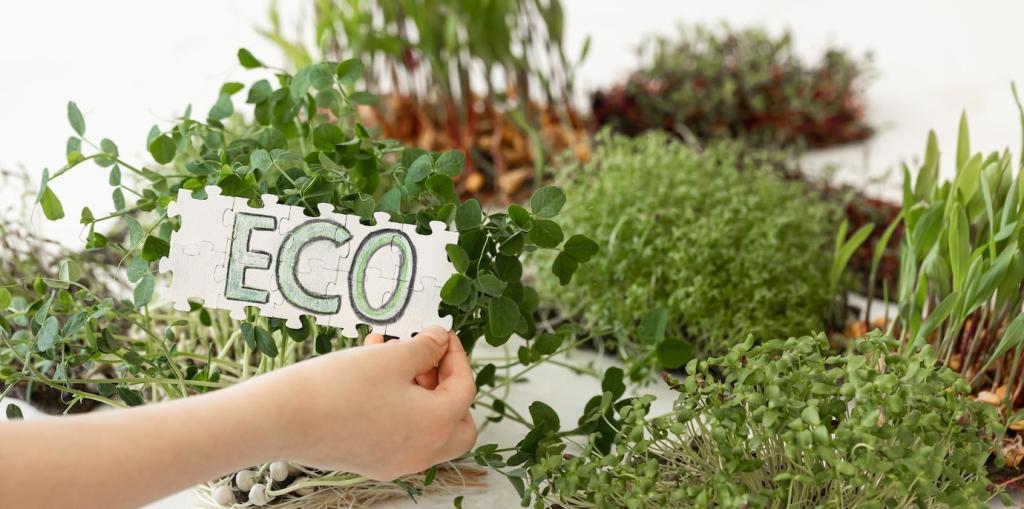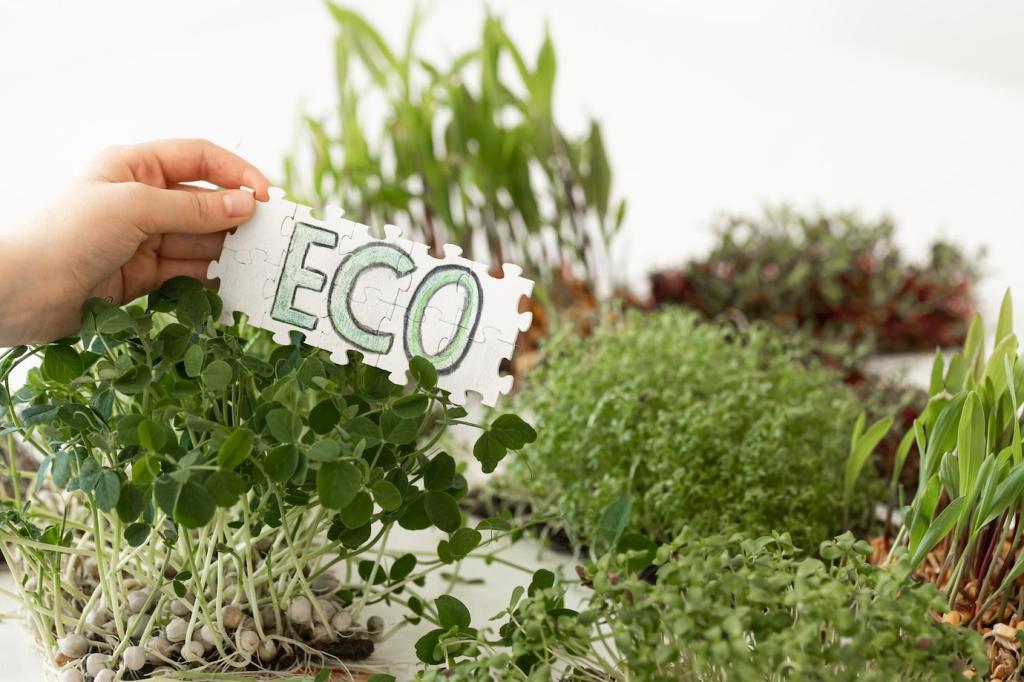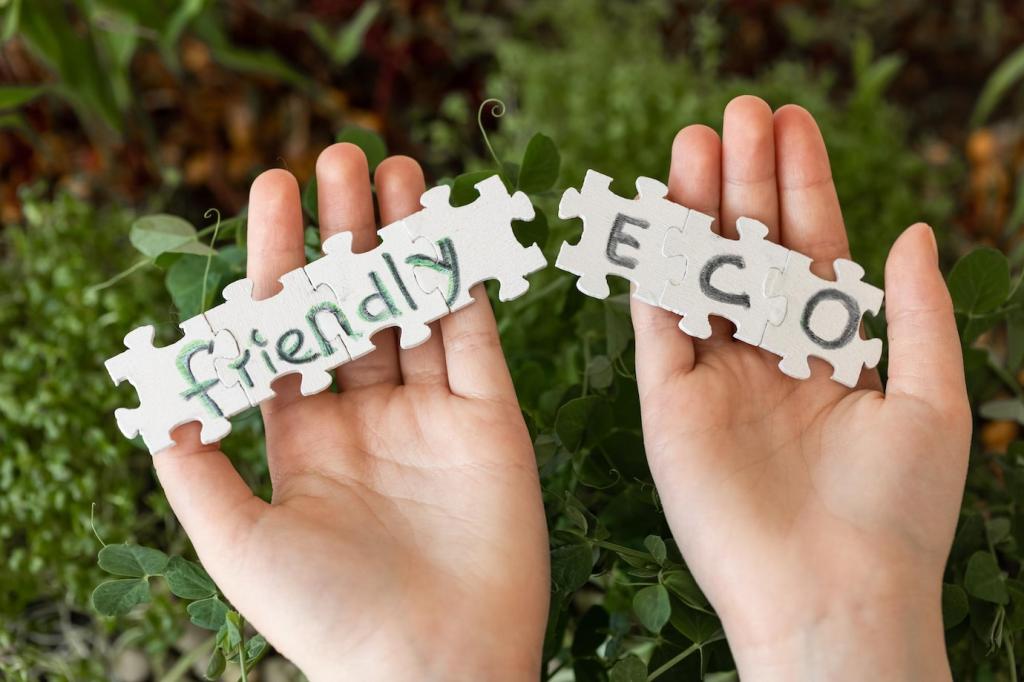Eco-Friendly Materials for Interior Design
Choosing eco-friendly materials is essential for limiting waste, reducing carbon emissions, and preventing resource depletion. These materials often require less energy for extraction, production, and transportation. Investing in sustainability from the outset guarantees that interior spaces have a lasting positive effect on the planet. Anyone investing in design should consider material lifecycles and their broader impacts, ensuring that beauty doesn’t come at the expense of nature.
The Importance of Sustainable Materials
Reclaimed and Recycled Materials
Reclaimed wood is salvaged from old buildings, barns, or decommissioned structures and repurposed for new interior uses. Its weathered textures and rich patina give warmth and authenticity to any space. Aside from its aesthetic benefits, reclaimed wood prevents the need for further deforestation, helping to protect fragile ecosystems. It’s an ideal choice for flooring, wall treatments, and custom furniture that showcases history while honoring sustainability.
Metals such as aluminum, steel, and copper can be recycled indefinitely without losing quality. Recycled metals are often used in fixtures, light fittings, and frames, bringing a modern and industrial edge to interiors. Incorporating recycled metals dramatically reduces environmental strain, as the production process uses far less energy compared to sourcing raw metals. Their durability also ensures longevity and fewer replacements over time.
Upcycling gives discarded items or materials a new purpose, transforming them into functional pieces of art. Old doors, pallets, or industrial components can be reimagined as tables, shelves, or accent pieces. The charm of upcycled furnishings lies in their individuality and story, making each item a conversation piece. At the same time, they help divert waste from landfills and reduce demand for new manufacturing.

Natural Fibers and Textiles
Grown without synthetic pesticides or fertilizers, organic cotton is a healthier and more sustainable alternative to conventional cotton. It is gentle on sensitive skin and aligns with eco-friendly standards, making it suitable for bedding, curtains, and upholstery. By choosing organic cotton textiles, you help support farming practices that prioritize soil fertility and water conservation while avoiding harmful chemicals.
Hemp is rapidly becoming a favorite in green interior design thanks to its minimal water needs and rapid growth. Its strong fibers yield durable textiles that are naturally resistant to mold and UV rays. Used for throws, cushions, and draperies, hemp brings both a rustic appeal and an impressive life cycle analysis. Its production requires far fewer chemical inputs than other crops, ensuring its status as a top eco-friendly material.
Linen, derived from the flax plant, is cherished for its breathability and elegant texture. Its cultivation requires less energy and water compared to other fibers, making it a mainstay of sustainable design. Linen fabrics drape beautifully and feel cool to the touch, offering both comfort and style. With its biodegradable nature, linen completes the circle of sustainability, returning harmlessly to the earth after its useful life.

Low-VOC and Zero-VOC Paints
Volatile organic compounds, found in many traditional paints, can cause respiratory issues and other health problems. Low-VOC and zero-VOC paints offer a safer alternative, greatly reducing airborne toxins. These paints now come in an extensive range of colors and finishes, proving that eco-consciousness doesn’t mean compromise. Their use helps maintain healthy living environments, protecting both human well-being and planetary health.

Natural Oil Finishes
Derived from renewable plant sources such as linseed, tung, or walnut, natural oil finishes deliver outstanding protection and beauty for wood surfaces. Unlike synthetic varnishes, they penetrate deeply to strengthen wood while allowing it to breathe. Their subtle, matte sheen enhances the natural grain, contributing to warm, organic interiors. The absence of harsh chemicals further aligns with sustainable and health-oriented design principles.
Water-Based Sealants
Water-based sealants are a greener alternative to solvent-based versions, which can emit high levels of toxic fumes. These sealants cure quickly and provide durable protection for countertops, floors, and other high-traffic areas. The innovation behind water-based formulas has produced almost odorless and easy-to-apply solutions, ensuring a safer indoor environment. They represent the next step in blending innovation with environmental responsibility.
Previous slide
Next slide
Innovative Composite Materials
01
Recycled Plastic Surfaces
Recycled plastics are transformed into solid surfaces for countertops, tiles, and decorative panels. These composites prevent plastic waste from entering landfills or oceans, giving it a second life in beautiful, functional products. Technological advances have made it possible to mimic natural stone, solid-color, or terrazzo effects, offering creative freedom with sustainability built in. As awareness grows, these materials have become symbols of a circular, zero-waste economy.
02
Strawboard and Wheatboard
Agricultural by-products such as straw, wheat, or rice husks are pressed into sturdy boards used for cabinetry and furniture. These composite materials are formaldehyde-free and provide a lower-carbon alternative to conventional particleboard. Their use diverts organic waste from disposal streams while creating strong panels with unique grain patterns. As resources for eco-friendly interior architecture, they signal a practical and attractive use of what was once considered agricultural residue.
03
Cork Panels
Cork is harvested from the bark of cork oak trees, which regenerate after each harvest. Compressed cork panels and tiles offer thermal and acoustic insulation, along with a distinctive visual texture. Cork is hypoallergenic, moisture-resistant, and fully biodegradable, making it perfect for both wall coverings and flooring. Its soft underfoot feel and renewability have secured cork’s status as a must-have eco-friendly material.

Linoleum
Made from linseed oil, pine resin, cork dust, and wood flour, traditional linoleum is experiencing a resurgence in sustainable interiors. Its composition is entirely biodegradable and contains no toxic additives, making it safe for every room. Linoleum comes in vibrant colors and patterns, providing versatility for residential and commercial spaces alike. With proper care, it can last for decades, making it a long-term, low-impact flooring solution.
Recycled Glass Tiles
Recycled glass tiles are crafted from post-consumer or post-industrial glass, offering a gleaming, mosaic-like appearance. They are suitable for floors, backsplashes, and accent walls, instantly elevating the look of a space. The manufacturing process uses less raw material and less energy compared to producing tiles from scratch. Their inherent durability, unique coloration, and reflective properties make them an attractive and responsible choice.
Biophilic and Nature-Inspired Design Materials
Living walls, often made from preserved moss or live plants, introduce lush greenery into indoor environments. These features act as natural air filters and humidity controllers, creating healthier and more pleasant spaces. The organic textures and gentle color variations are soothing to the eye, making living walls a focal point that brings the serenity of nature indoors. Their modular construction allows adaptation to homes, offices, or hospitality venues.
